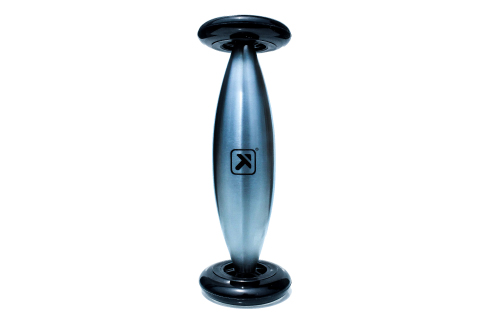Using Cold Therapy for Recovery

Why are those runners standing in Barton Springs Pool? And what’s the thinking behind your office mate, who rollers the bottom of her foot on a frozen water bottle? Does your boyfriend really need to keep that metal barbell-looking thing in the freezer all the time?
Chances are the athlete in your life is using some form of cold therapy to treat overuse injuries, chronic pain, and any acute injuries that may have arisen. Cold therapy (applying ice or cold to an injury site) reduces swelling and pain, causes blood vessels to constrict and limit internal bleeding, reduces or prevents inflammation, and speeds recovery after hard workouts.
Steve Cuddy, M.P.T., P.R.C., is a physical therapist with his own practice: “Ice is most appropriate in the acute stages of any injury or if there is a perceived ongoing active inflammatory process—that is, swelling with obvious increased temperature in those tissues.” You can feel an actual increase in temperature in body parts that are actively inflamed. But don’t go by swelling alone, Cuddy pointed out; after significant exercise, “you may have edema (swelling) that is unassociated with an active inflammatory process “ (i.e., every endurance athlete has experienced “cankles” at some point).
You can also practice preventative cold therapy. Dr. Martha Pyron, with Medicine in Motion, is a sports medicine specialist who recommends an ice bath (yes, it’s what it sounds like; athletes sit in a tub with a mix of cold water and ice cubes). “After a high intensity endurance event such as a marathon or triathlon, sitting in an ice bath quickly lowers your body temp back to normal, which will help prevent heat illness as well as help muscle recovery,” she explained. Cuddy agreed with Pyron: “Ice baths can be a great, quick way to cool a larger area. Only a minute or so a few times has been shown to effectively reduce inflammation and flush inflammatory junk.”
Doctors and physical therapists recommend cold therapy for a variety of athletic issues; the rolling-a-foot-on-a-frozen-water-bottle treatment is most likely in response to the pain of plantar fasciitis. But cold can be used anywhere and through a variety of forms, from cubes wrapped in a towel to ice packs to a variety of specialty products and treatments (some, such as cryotherapy, are quite expensive and involve a trip to an office). However, skip the creams and gels; “Topicals are just that,” Cuddy explained. “They affect the skin and not much more. [They] will give a sense of ‘coolness’ but provide essentially no physiological benefit.”
A good product can make cold treatment easy to administer. Trigger Point Performance has come out with the Cold Roller, which combines their trademark rolling form (myofacial release after workout is another great injury preventative) with cold therapy. The stainless steel roller, shaped somewhat like a barbell with wheels, has a gel core and goes into the freezer; in two hours, it’s ready to use. After wiping it down to remove any frost, begin to lightly roll the target area—there are instructional videos on the website at tptherapy.com if you’re new to rolling. Unlike other common home methods (ice in a towel, frozen peas, packs), the Cold Roller stays cold for up to 3 hours, long past the 10-20 minute length of most recommended cold therapy sessions. The benefit is that you can ice multiple areas with one product in a single session. In the interest of full disclosure, AFM has a Cold Roller in the freezer at the office; the stainless steel combined with wiping down before use keeps it germ free.
TIPS FOR AN ICE BATH
Go ahead and wear your running shorts and a top. Bring something warm to drink. You’ll need a bag of ice or quite a few ice buckets worth if you’re in a hotel room. Run the bathwater on “cold” and get in all at once. If you have a helper, it can be easier to simply sit in the cold bath water and have your friend dump the ice in for you. Make sure your legs are submerged. While standing in Barton Springs feels great after a hot run, the water temperature is only about 68-70 degrees year ‘round.






